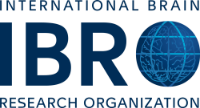| |
| Website |
|
About
|
Relevant People: |
| |
| Website |
|
About
|
Relevant People: |
United States of America | |
| Website |
|
About
|
Relevant People: |
Switzerland | Basel |
| Website |
|
About The Anatomical Museum in Basel is part of the Faculty of Medicine. It is a centre for research and medical studies and houses a unique collection of historical preparations. Original preparations of human body parts, organs and tissue are displayed, which show the structure of the human body in a systematic and topographic way. Exhibits of prenatal development are also shown. Special exhibitions explain specific areas of anatomy and connected sciences in a way, which is understandable for all visitors. The Anatomical Museum of the University of Basel was founded by Prof. Carl Gustav Jung in 1824. Original preparations of human body parts, organs and tissue are displayed in the museum. They are shown in a systematic and topographic order and describe the structure of the human body. Exhibits of prenatal development are also shown. Special exhibitions explain specific areas of anatomy in a way, which is understandable for all visitors. The museum houses contemporary exhibits as well as numerous historically valuable preparations, which were restored using modern techniques and are now shown in new displays. Of particular interest is the skeleton, which was prepared by Andreas Vesale in 1543 in Basel. It is known as the oldest anatomical preparation of a skeleton in the world. Also of interest is a preparation made in 1573 by Felix Platter, wax models made in 1850 by Carl Gustav Jung and body cross-sections (slices) made in 1900 by Hanson Kelly Corning. |
Relevant People:Prof. Carl Gustav Jung |
Switzerland | Geneva |
| Website |
|
About The University of Geneva brain collection was founded at the beginning of the 20th century. Today, it consists of 10,154 formaldehyde- or buffered formaldehyde–fixed brains obtained from the autopsies of the Department of Psychiatry and, since 1971, from the Department of Geriatrics. More than 100,000 paraffin-embedded blocks and 200,000 histological slides have also been collected since 1901. From the time of its creation, this collection has served as an important resource for pathological studies and clinicopathological correlations, primarily in the field of dementing illnesses and brain aging research. These materials have permitted a number of original neuropathological observations, such as the classification of Pick’s disease by Constantinidis, or the description of dyshoric angiopathy and laminar sclerosis by Morel. The large number of cases, including some very rare conditions, provides a unique resource and an opportunity for worldwide collaborations. |
Relevant People: |
Russia | St. Petersburg |
| Website |
|
About Pavlov’s scientific life is connected with Petersburg. He lived in this house on Vasilyevsky Island since he was eighteen years old. The construction of the building was started upon Peter the Great’s order and was given to the Russian Academy of Science in 1725. Apartment 11 on the second floor belonged to Pavlovs. Today, it is a unique memorial to Russian science. The idea of the museum belongs to Pavlov’s widow, Seraphima Basilyevna. The museum was open in 1949; their daughter Vera Ivanovna was its curator till 1964. Three of six rooms were preserved in original condition. Pavlov’s widow and daughter survived the World War II and Leningrad’s blockade. Not only were they able to save furniture, books and paintings but also the small interior details that tell us a lot of the habts and hobbies of the house owner. |
Relevant People:Ivan Petrovich Pavlo |
Russia | Riazan |
| Website |
|
About Ivan Petrovich Pavlov was a Russian physiologist known for his work in classical conditioning. He devoted his life to science. In 1904, Pavlov won the Nobel Prize for Physiology or Medicine and became the first Russian Nobel laureate. He was born during the reign of Nicolas I, and died during Stalin’s regime, having contributed his life to physiology and neurological sciences. One of Pavlov’s dogs is preserved at the Memorial Museum-Estate of Academician I.P. Pavlov in Ryazan, Russia. There, you can learn about Pavlov’s childhood and adult life and scientific path. Visitors can attend various lectures and film demonstrations dedicated to Pavlov’s life and scientific discoveries. Admission prices vary from 30 to 600 rubles depending on the age and tour options. One of Pavlov’s goals was to study the role of nervous system in digestion. He applied a new method to the surgery of digestive system that allowed for conducting extended studies of the animals. An example of Pavlov’s dog is preserved and can be viewed at the K. Timiryazev State Biological Museum in Moscow. |
Relevant People:Ivan Petrovich Pavlo |
Russia | Moscow |
| Website |
|
About The museum is a subdivision of Moscow State University and is a part of educational process. It’s goals include scientific research, collection and preservation of historical past of the oldest medical institution in Russia. The main museum collection consists of unique documents and relics from the University, family archives of doctors and professors, books, furniture, photographs of famous doctors and scientists, rare medical textbooks form West Europe and Russia, as well as anatomic atlases and dissertations. The Museum has a collection of medical instruments form 18th-20th centuries and equipment allowing to reconstruct the development and evolution of medicine in Russia. |
Relevant People: |
Russia | Moscow |
| Website |
|
About The Museum of Brain Evolution is the only exhibit in Russia and CIS dedicated to the evolution of the brain. It was opened in 1928 as a part of Neurological Scientific Centre in Moscow. Its collections include phylogeny of the nervous system, ontogeny of the human brain and brain anatomy. The Phylogeny of the nervous system collection features over 300 items (from coelenterates to primates). The exhibits of the museum serve as an initial introduction to the structure, development, functions and mechanism of animal and human nervous systems. It also provides an in-depth study of the general and specific issues of neurophysiology. The Museum of Brain Evolution offers a course of lectures on neurophysiology and related topics. |
Relevant People: |
Ukraine | Lviv |
| Website |
|
About This Museum is an affiliate of the university that serves as both a museum and a resource for students. Its exhibits include: Lviv Medical University: Past and Present, Ukrainian history (secret) University in Lviv, Doctors Galicia participants liberation struggle, History of the Ukrainian Medical Association of Lviv, History Hospital “National Hospital” in Lviv, Exhibition of medical instruments, medicines. |
Relevant People: |
Ukraine | Kyiv |
| Website |
|
About The National Museum of Medicine of Ukraine is one of the largest in Europe, covering medical history from ancient times to present day. The museum has: a collection of medical artifacts, and anatomical specimens, an archive of scientific publications and documents, portraits of prominent scientists and physicians, and even dioramas depicting important events in Ukranina medicine. For neuroscience, the museum preserves the work of Vladimir Betz, who discovered motor areas of the brain and has a type of neuron (a giant pyramidal cell) named after him. |
Relevant People:Vladimir Betz |
| Supported by |
In collaboration with |
  |
  |
| All information and images rights are reserved to the corresponding institutions. | Theme and design: by David Martinez Moreno. |